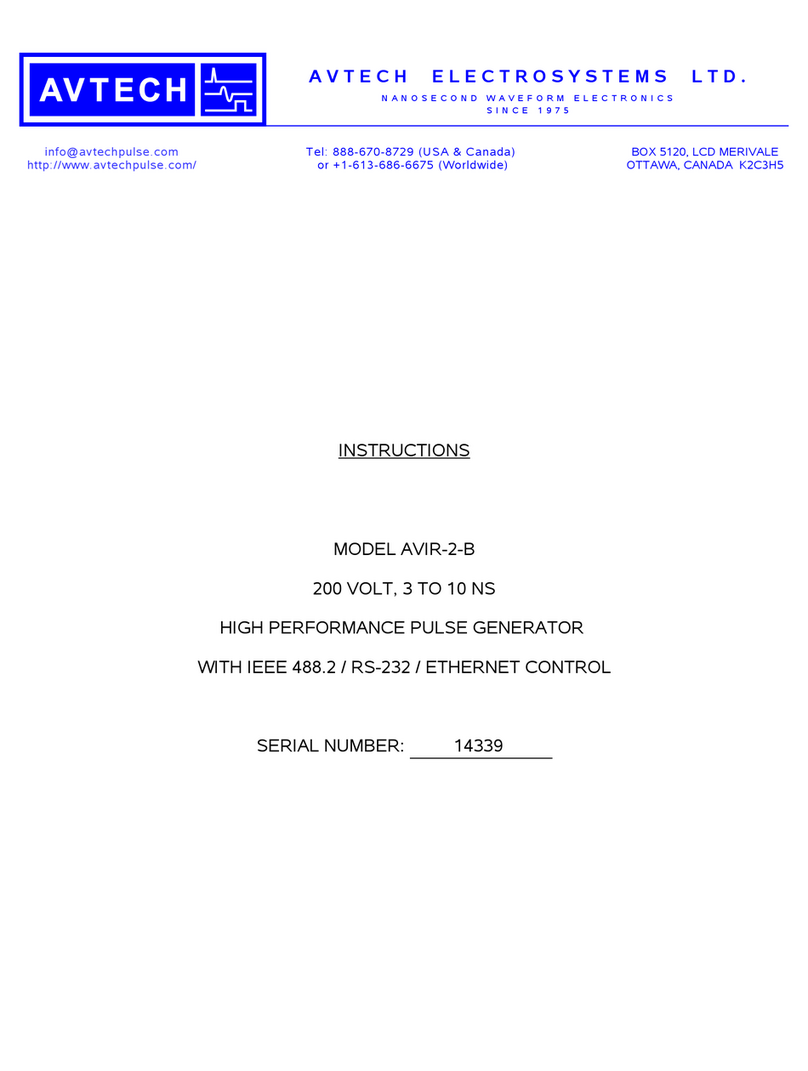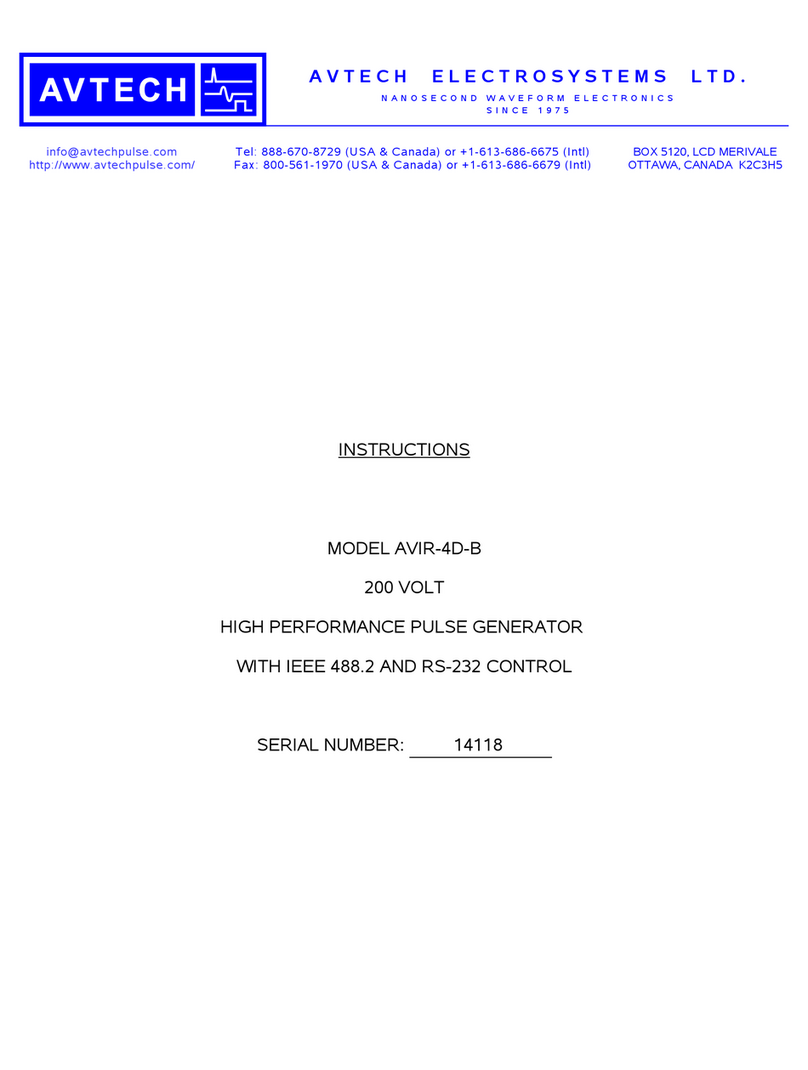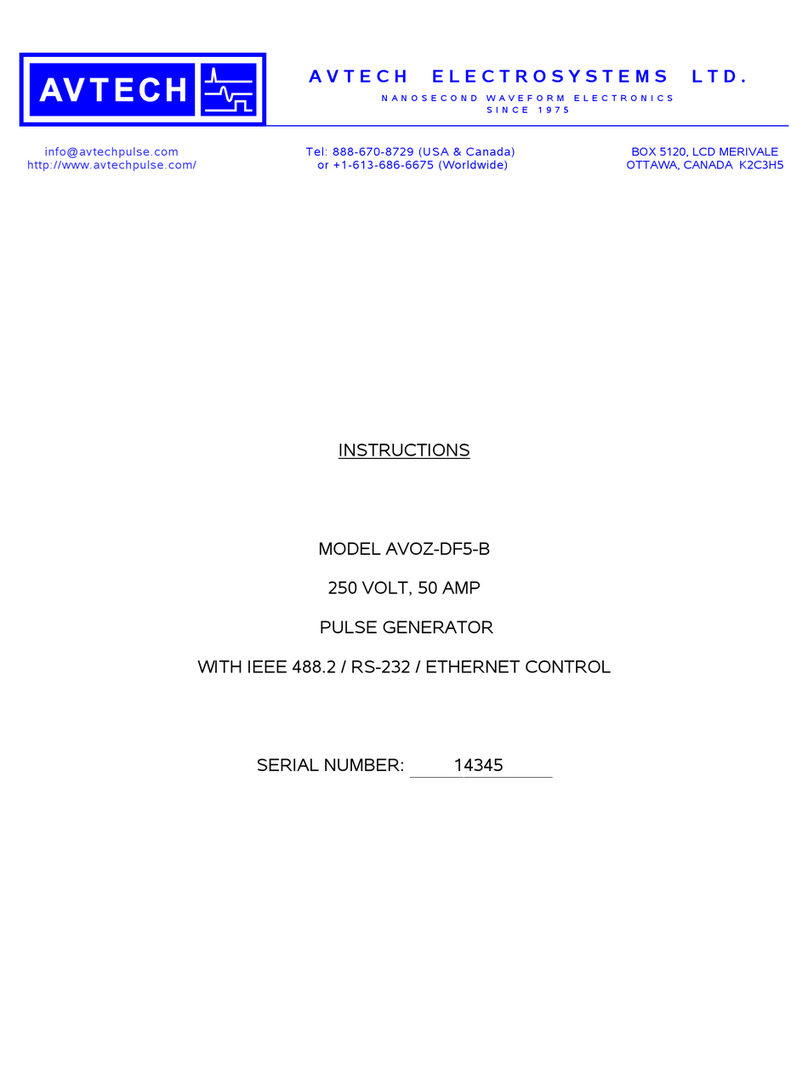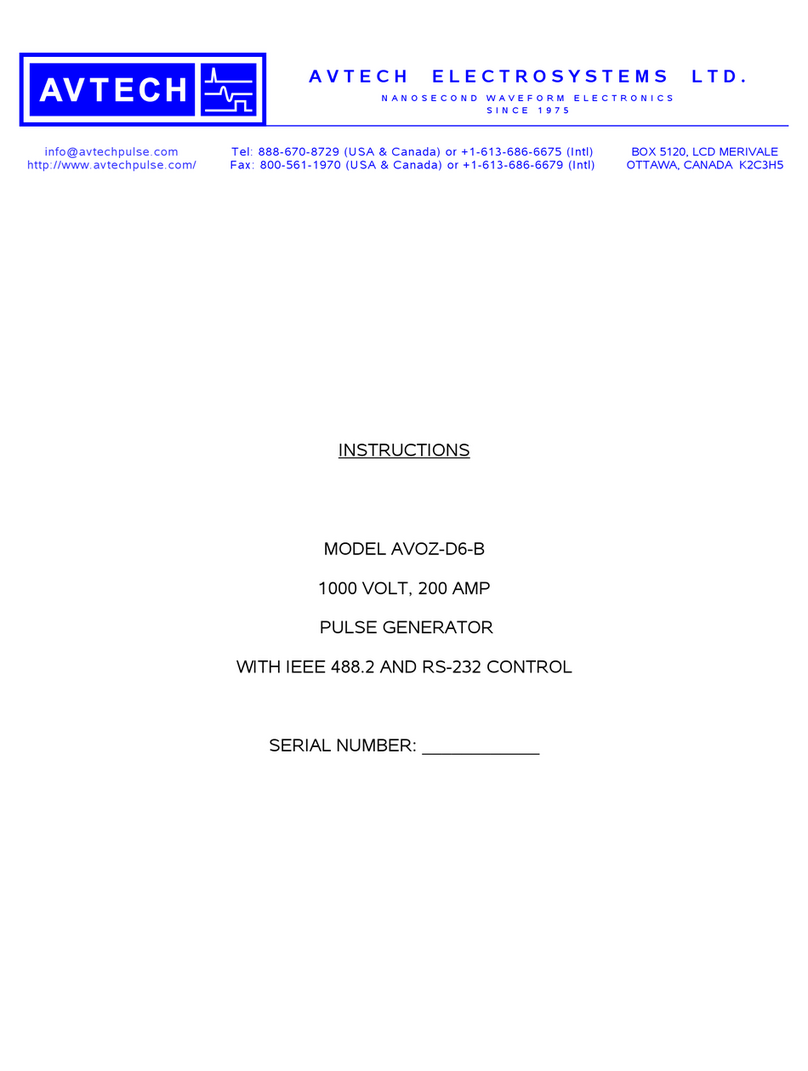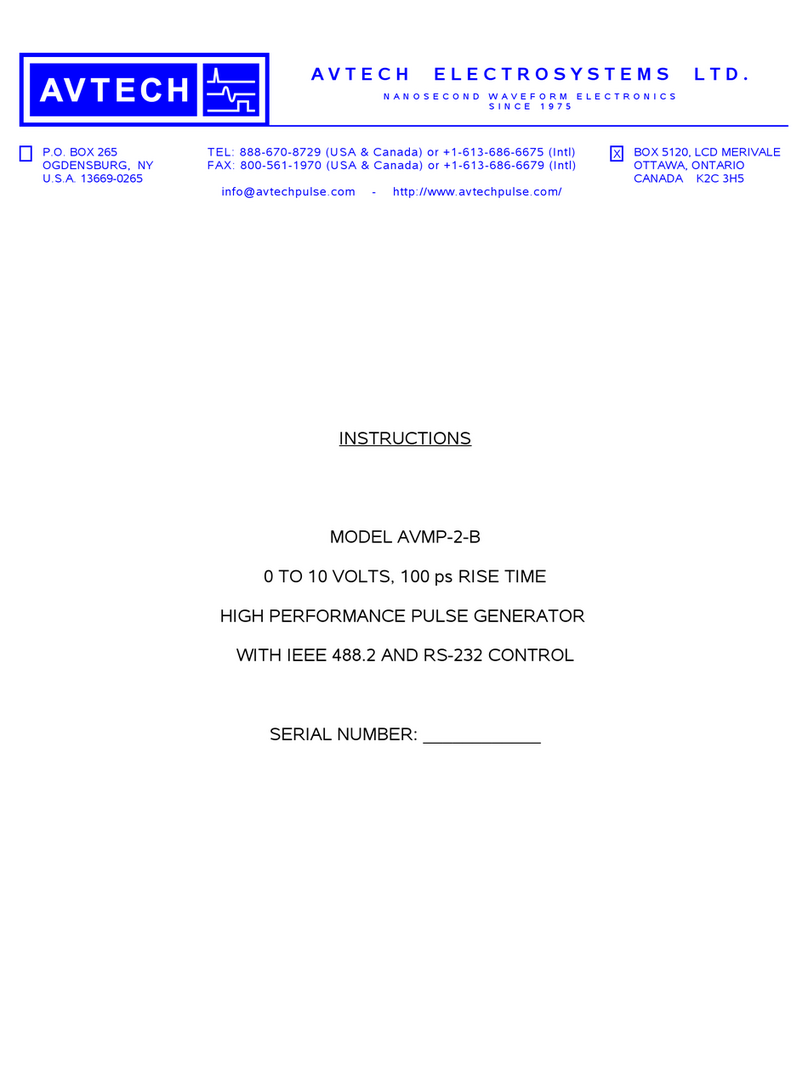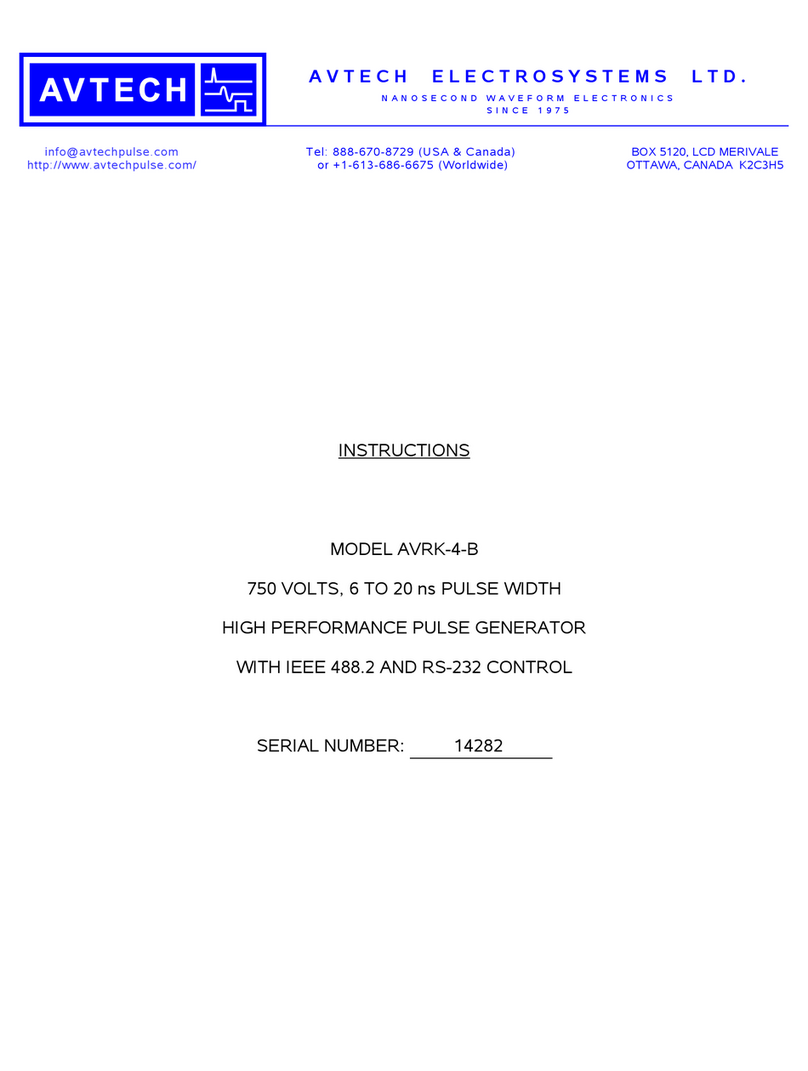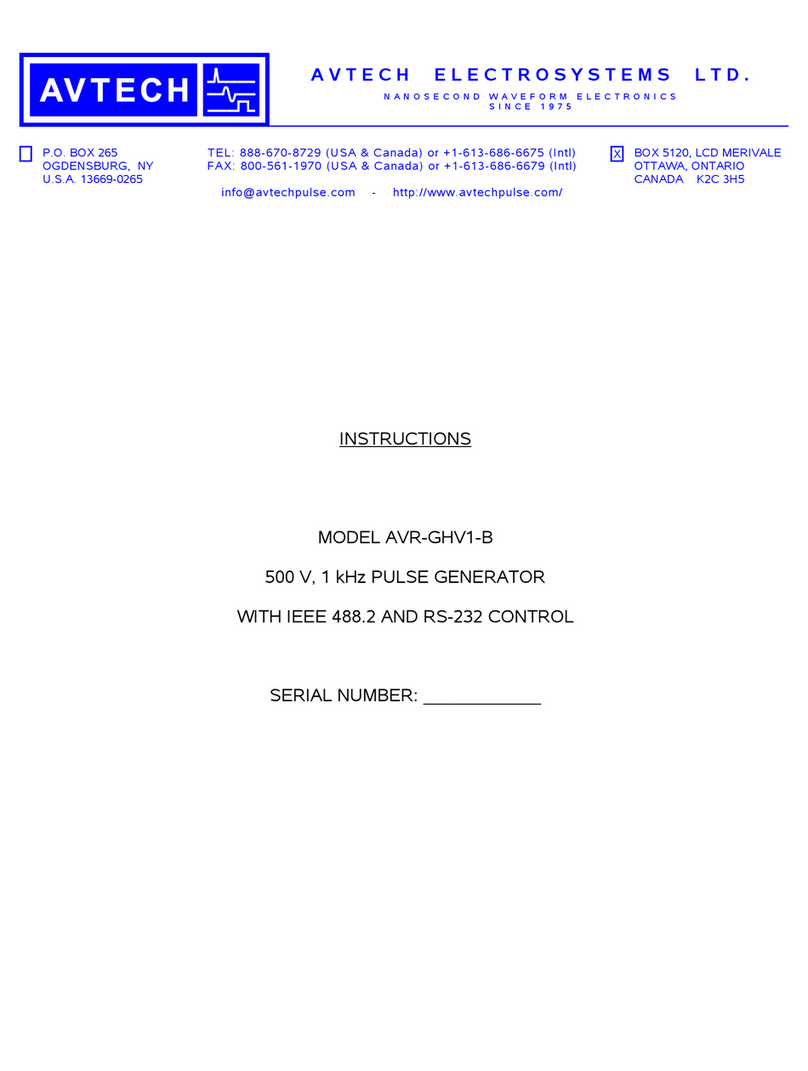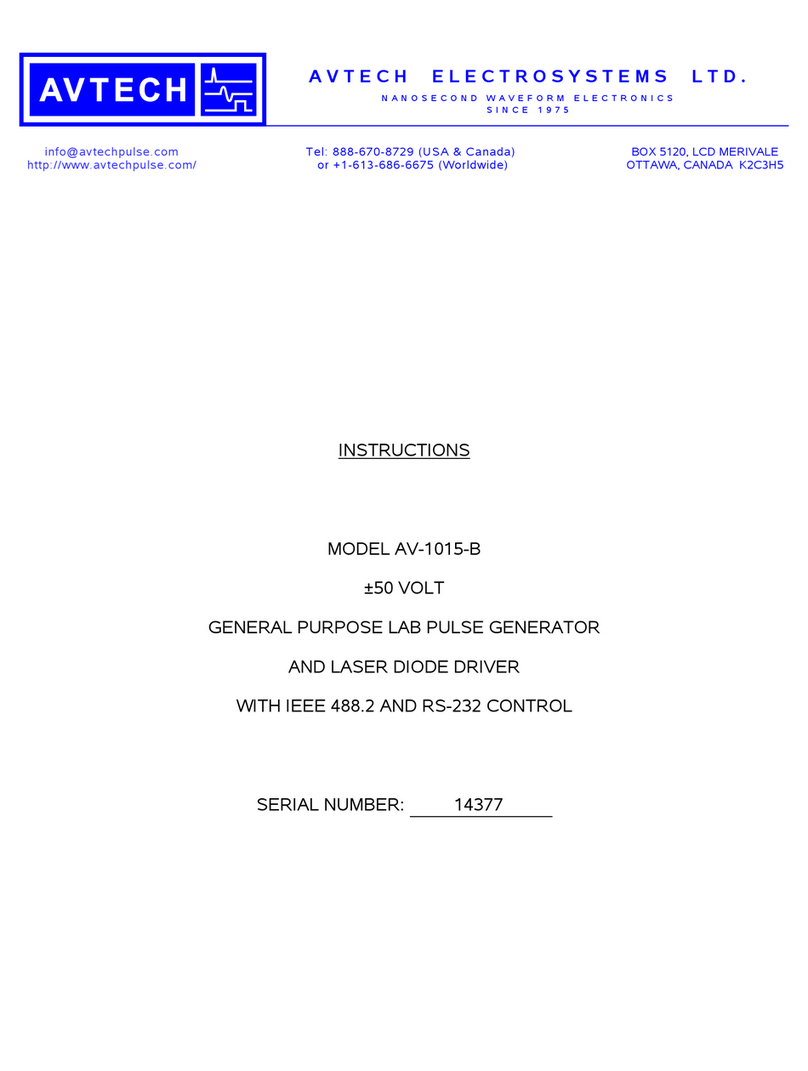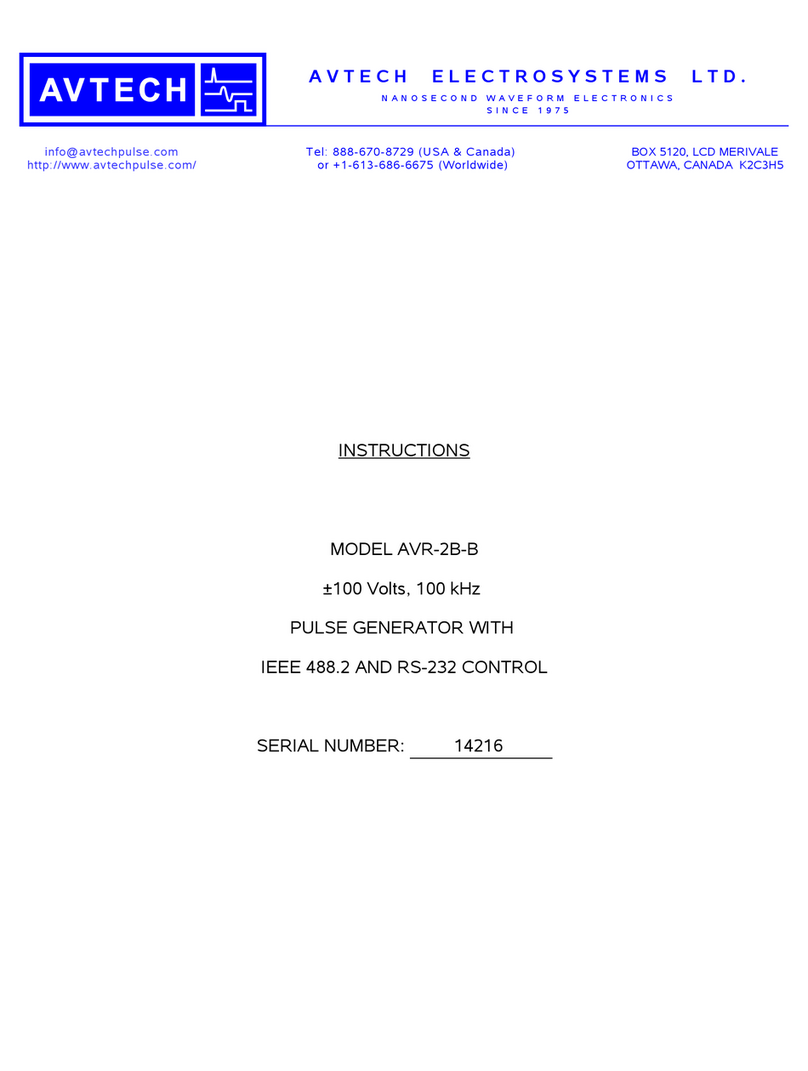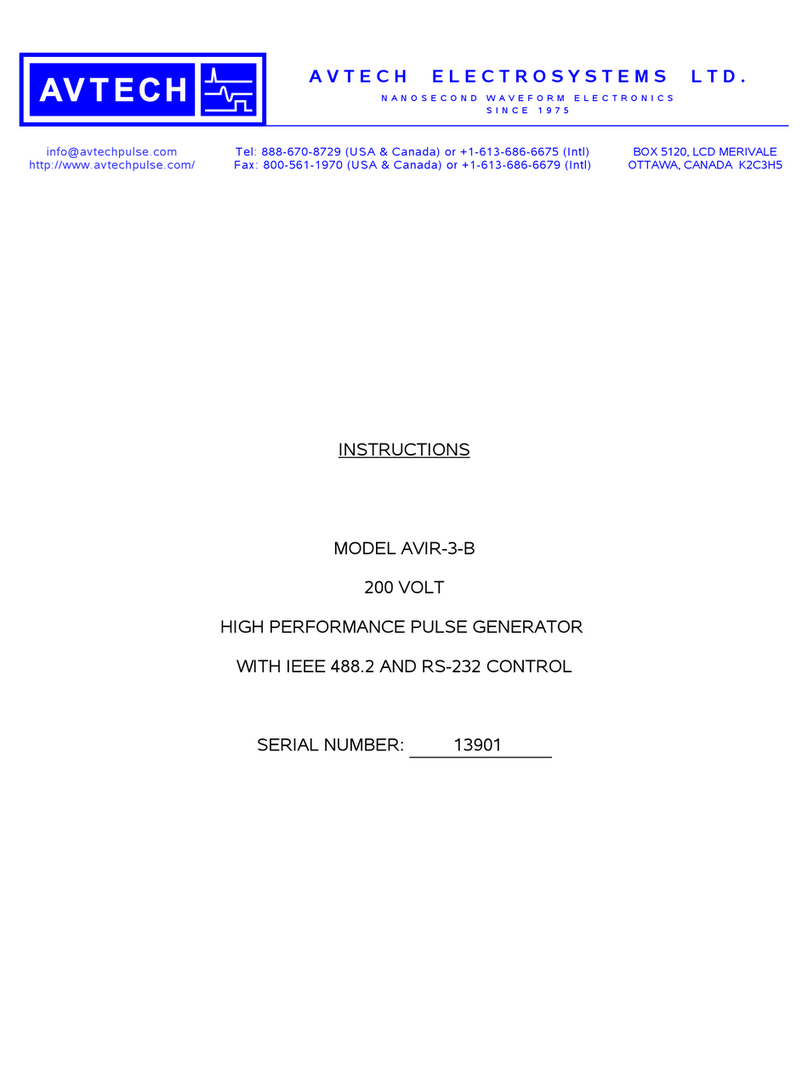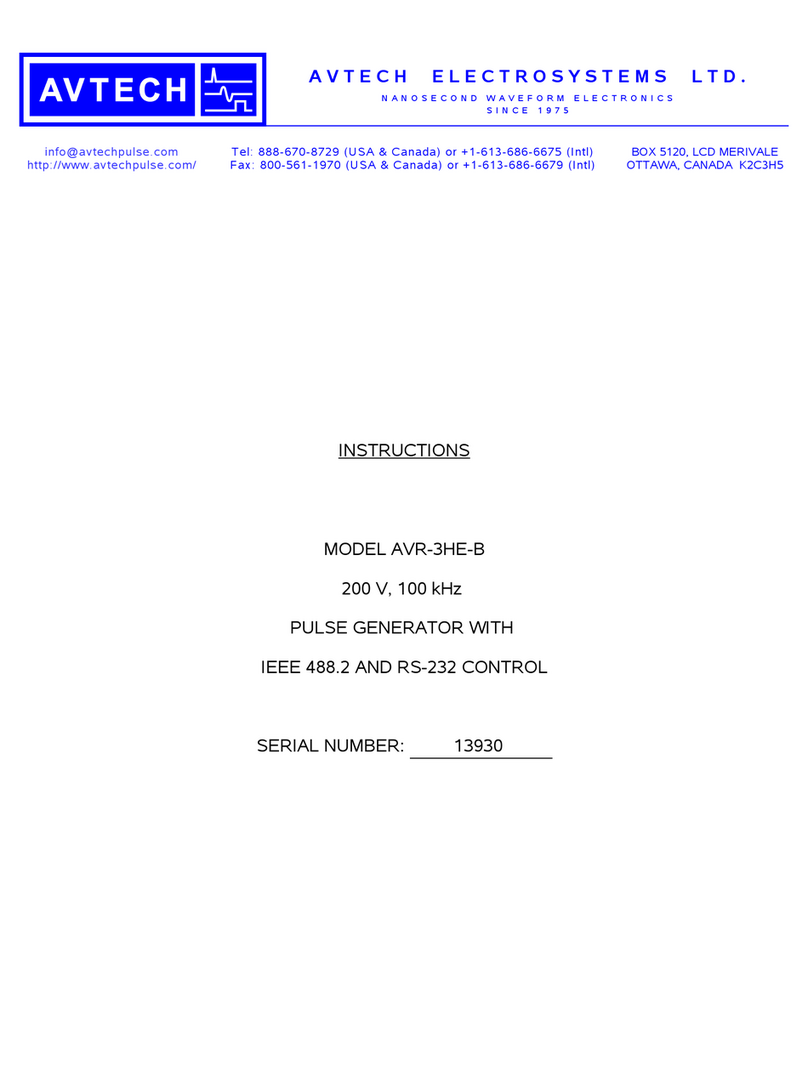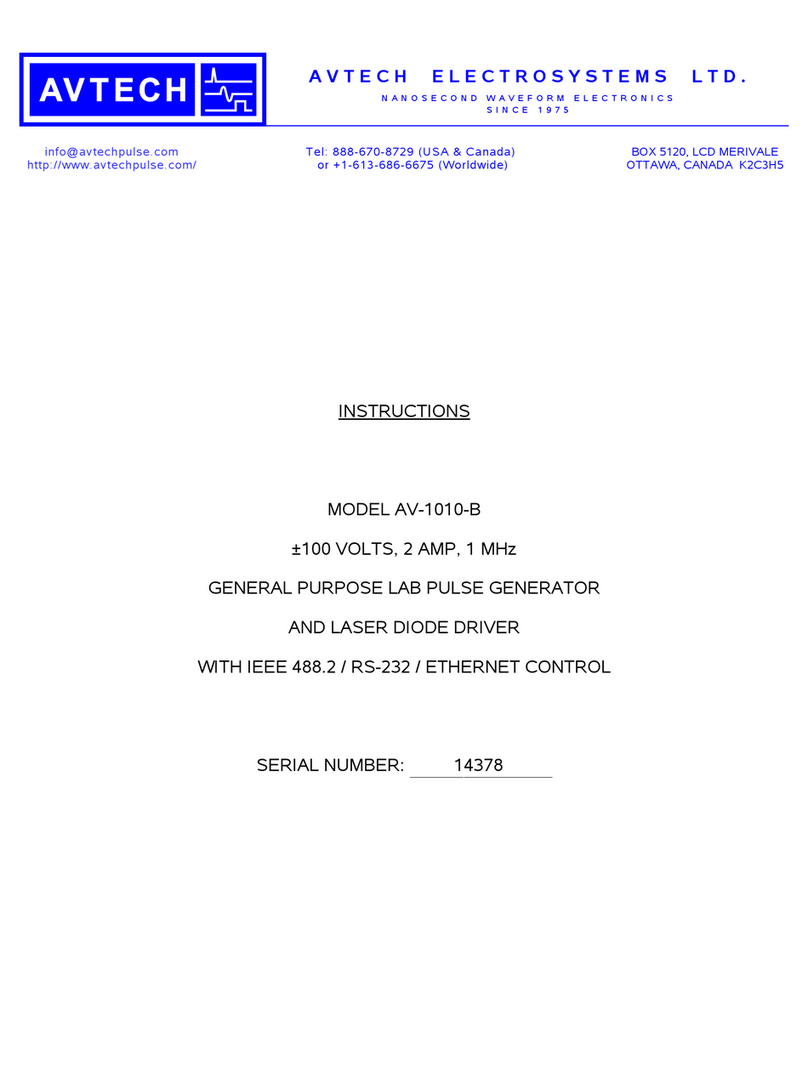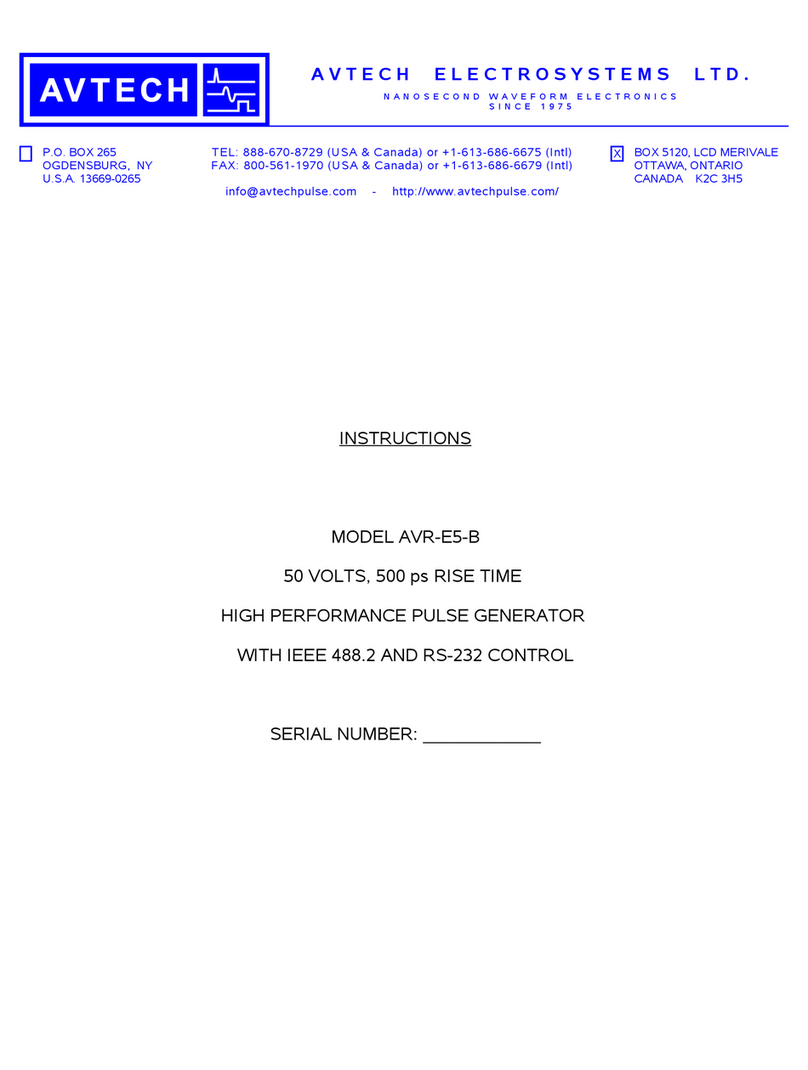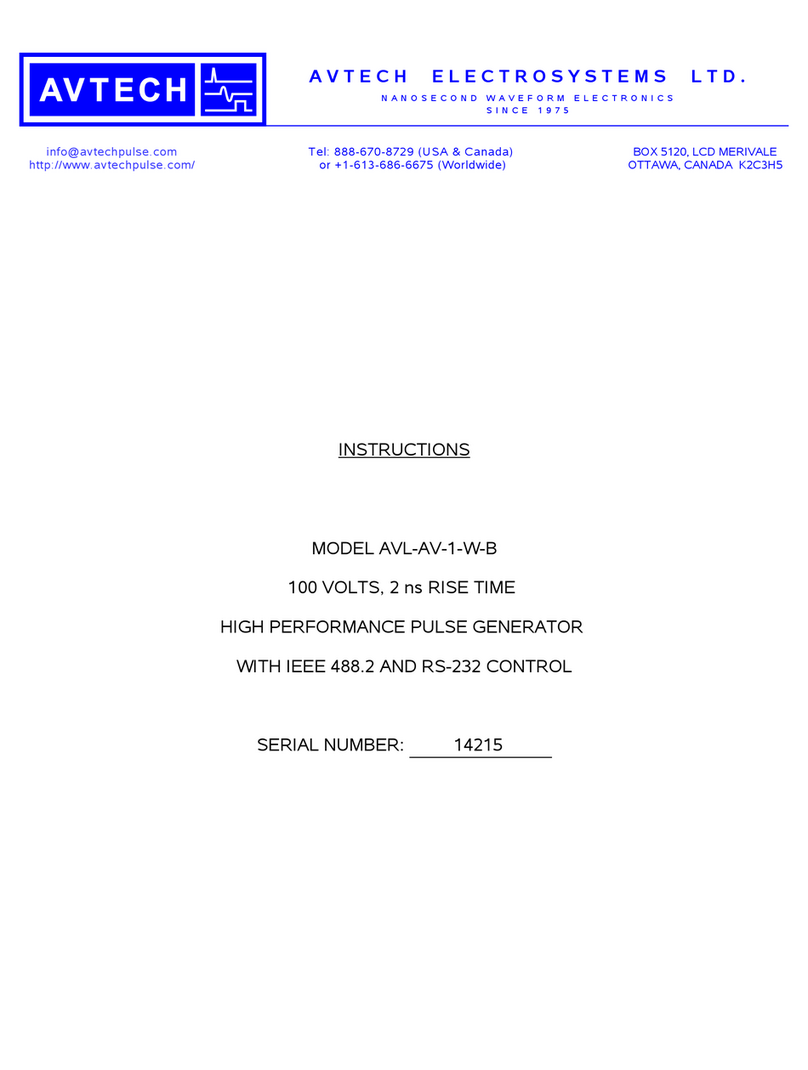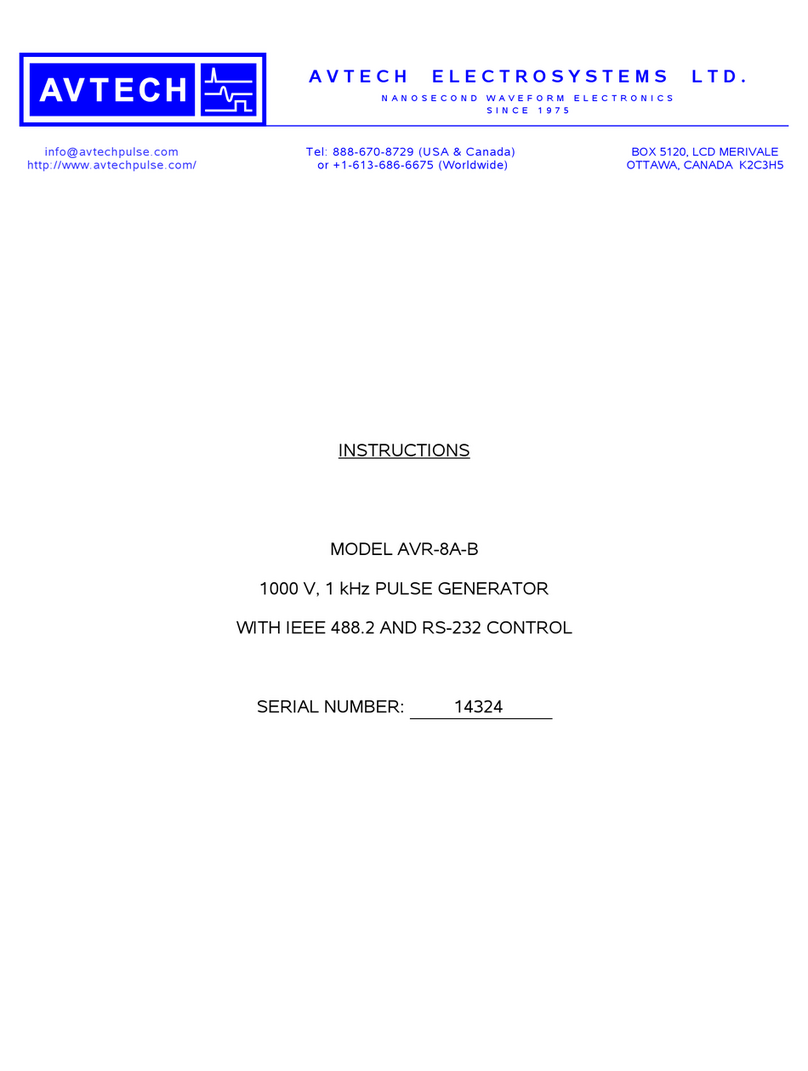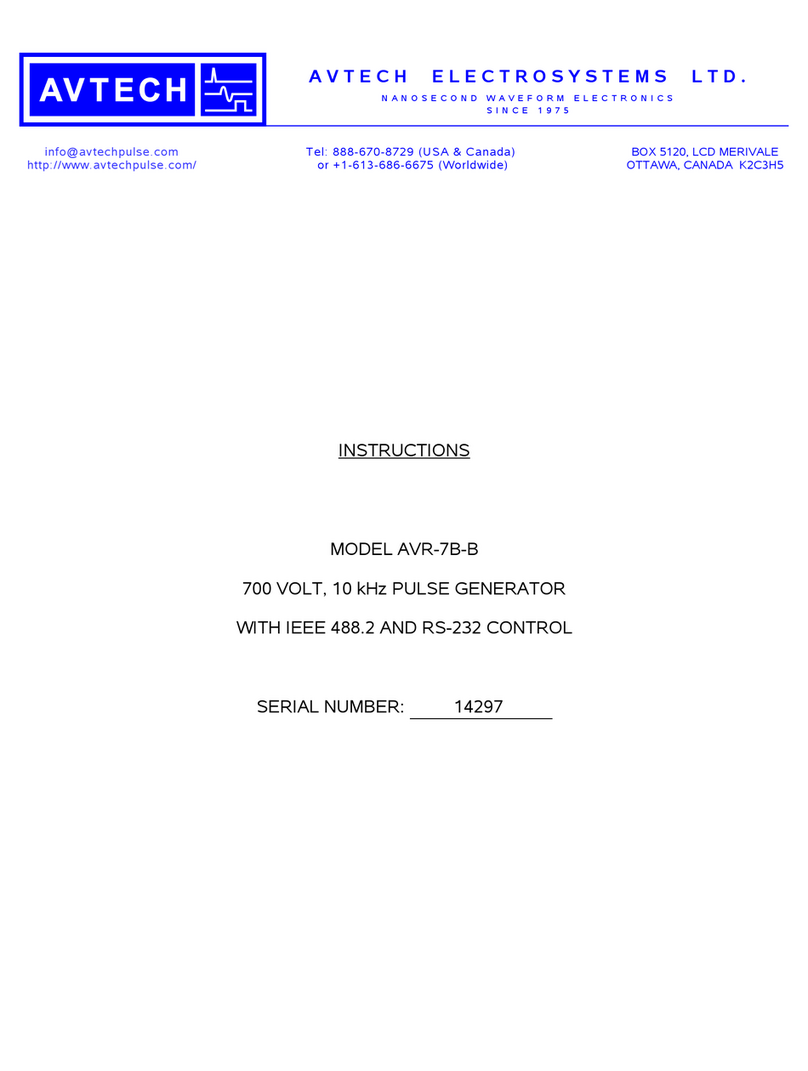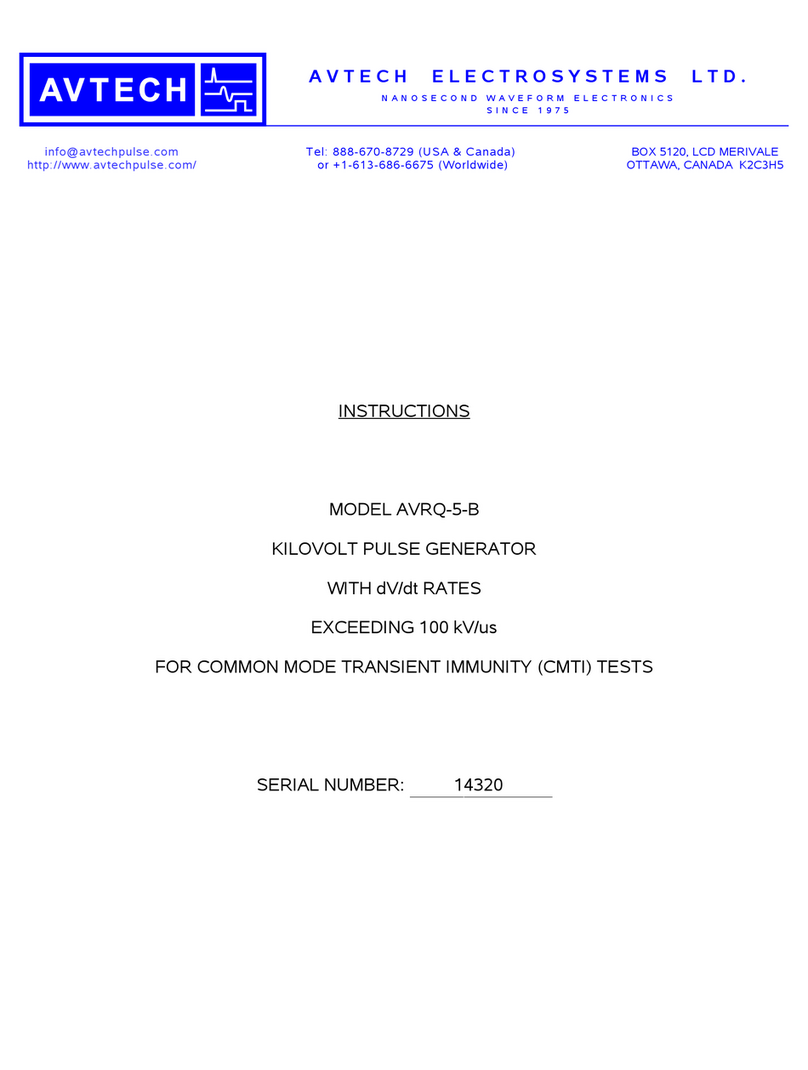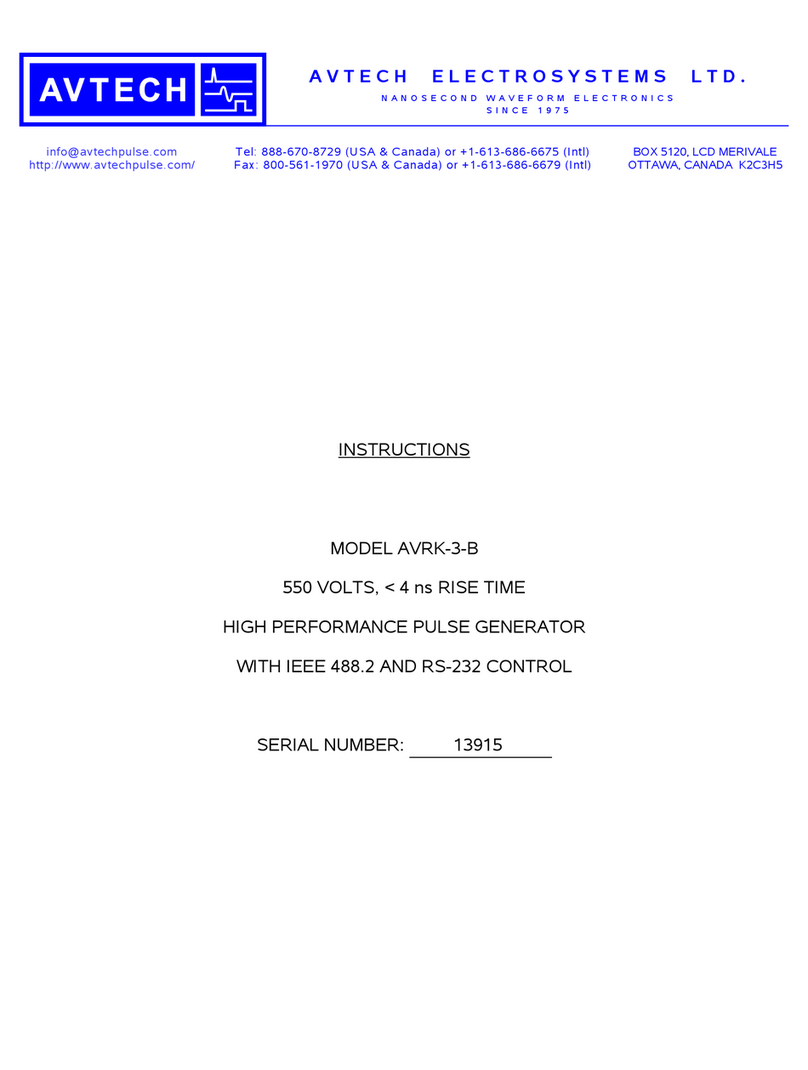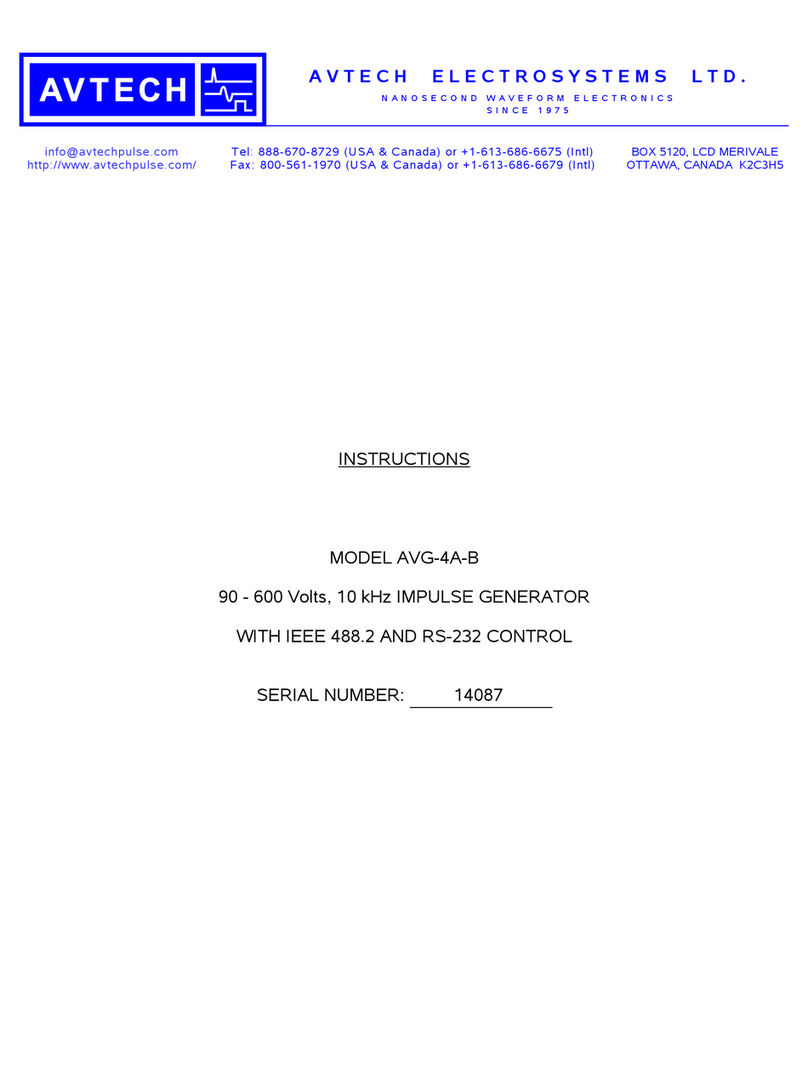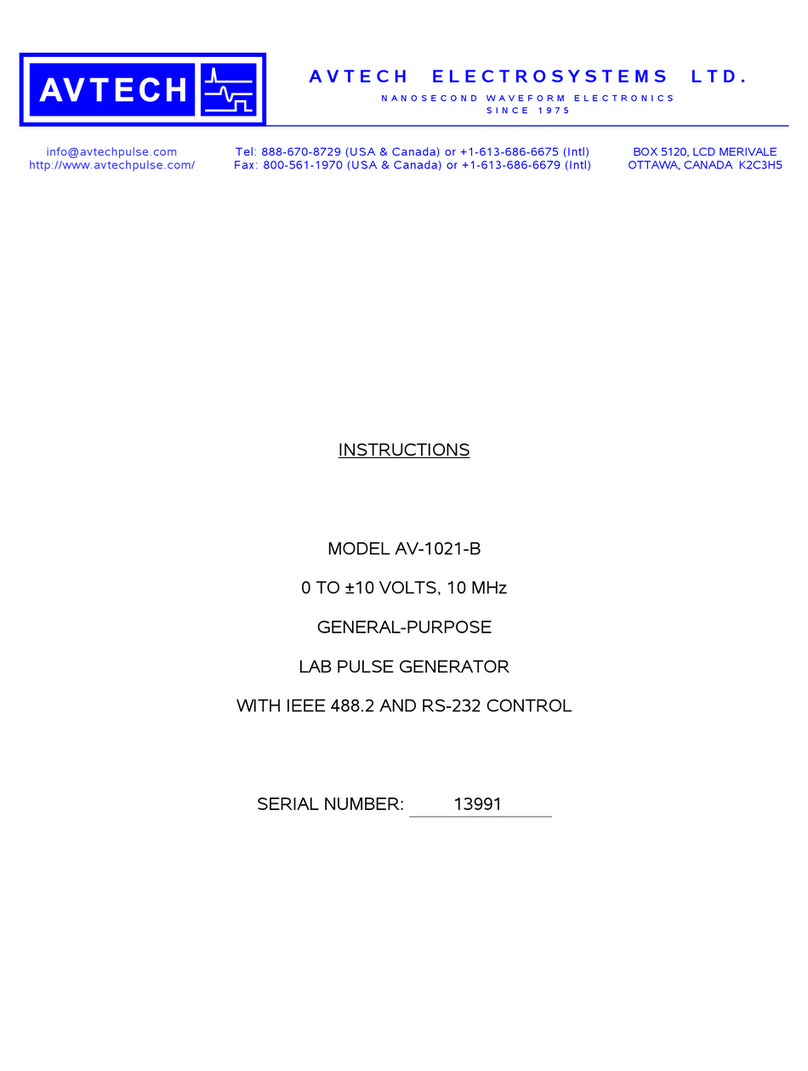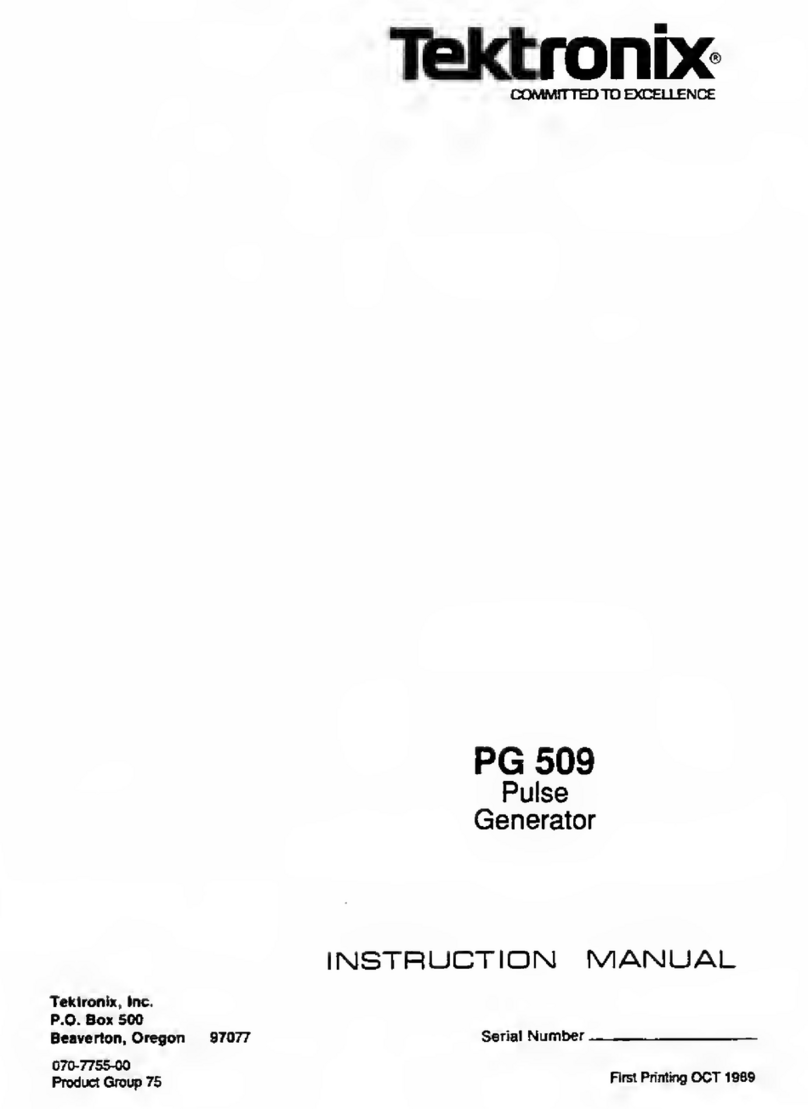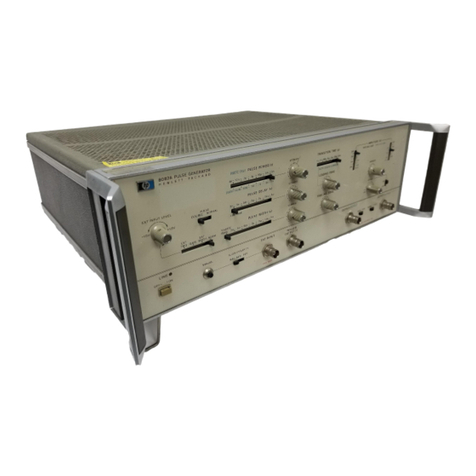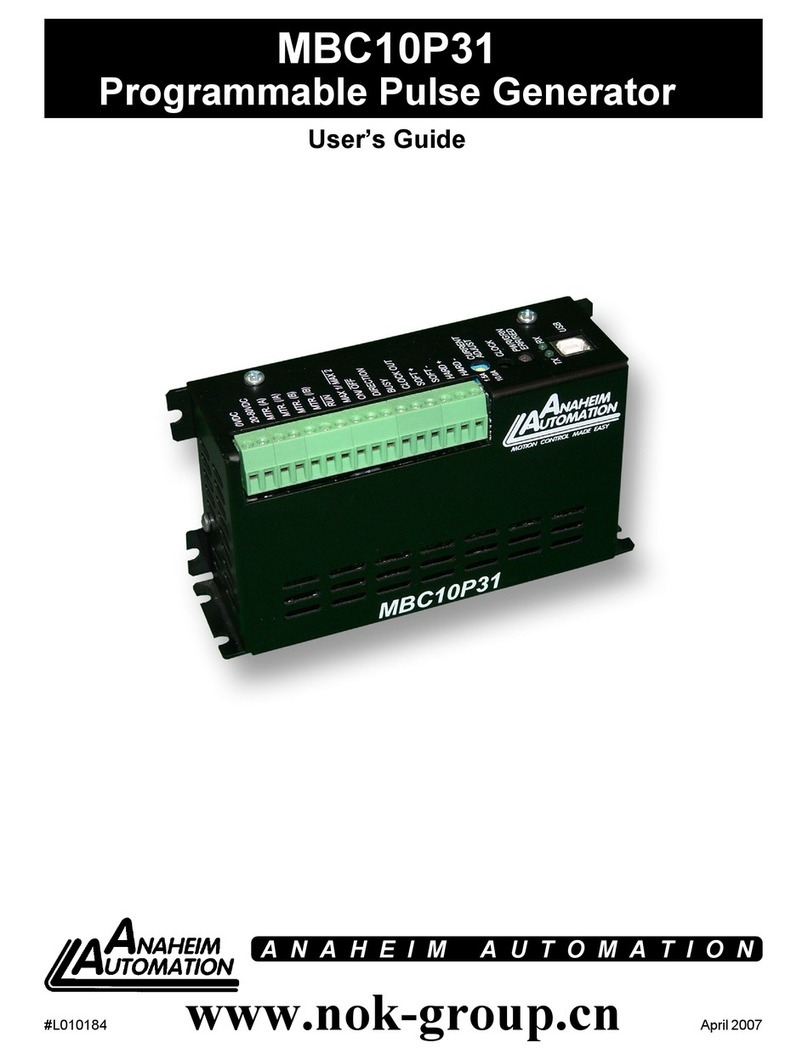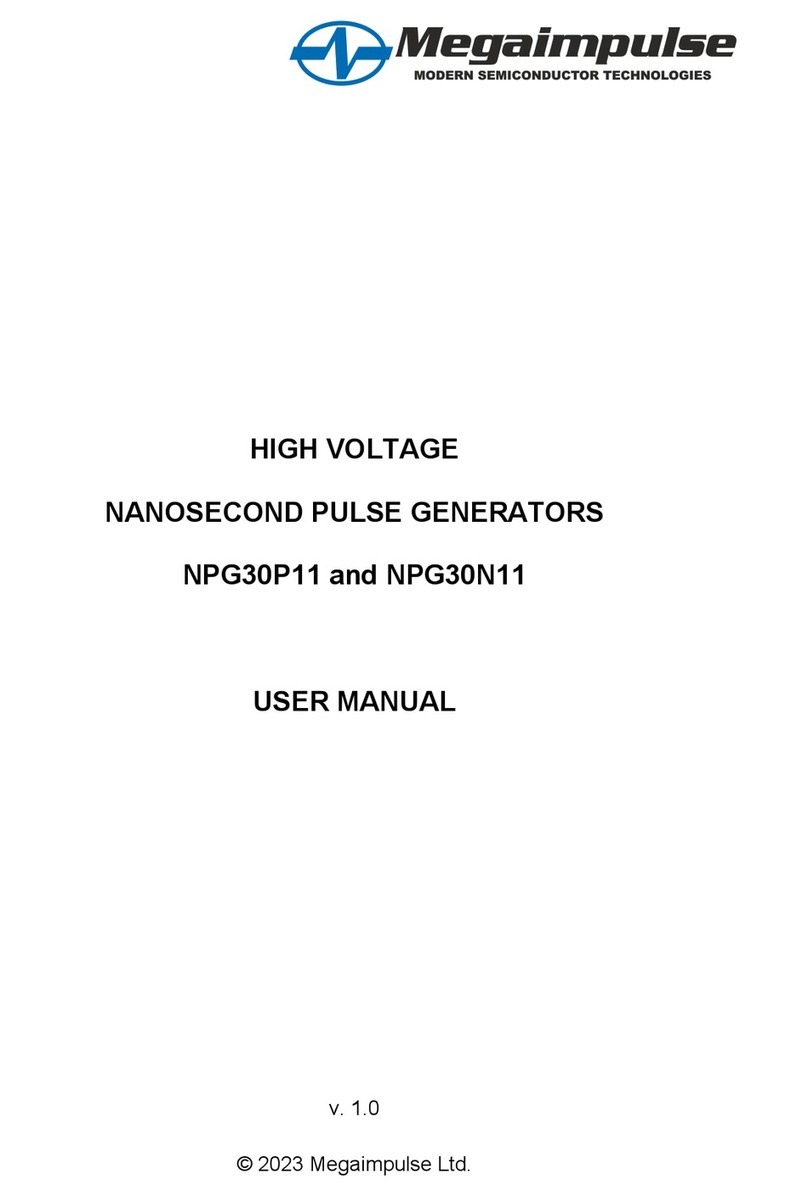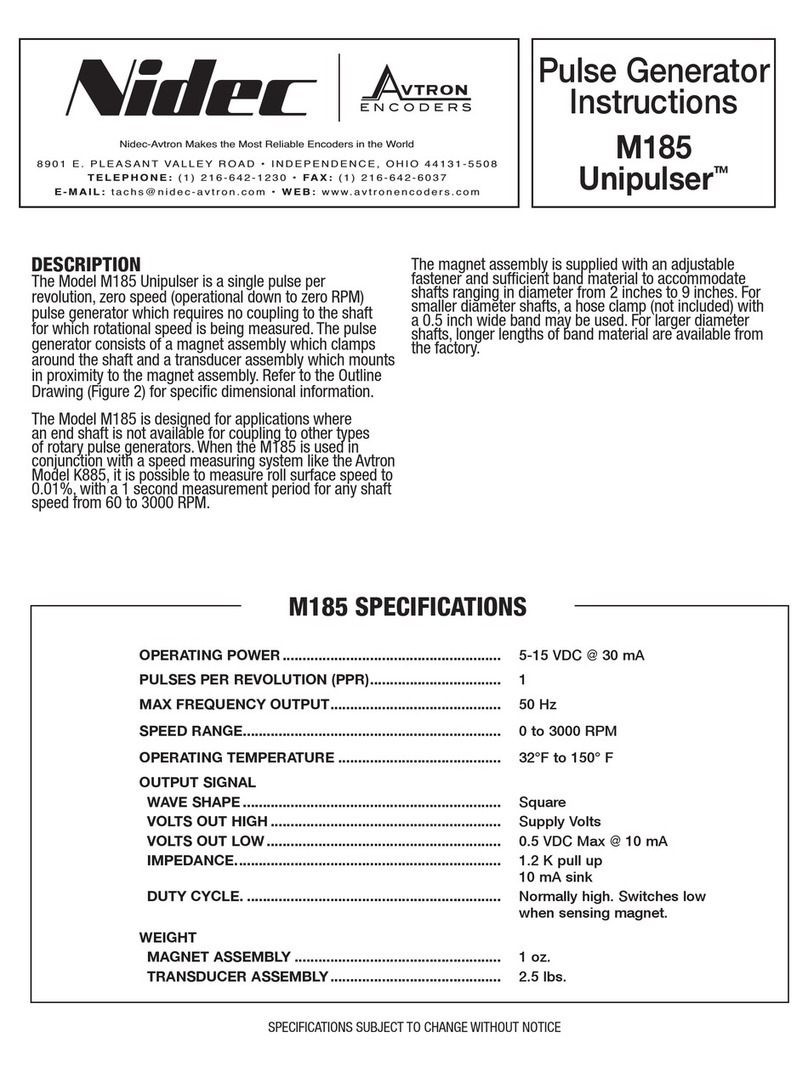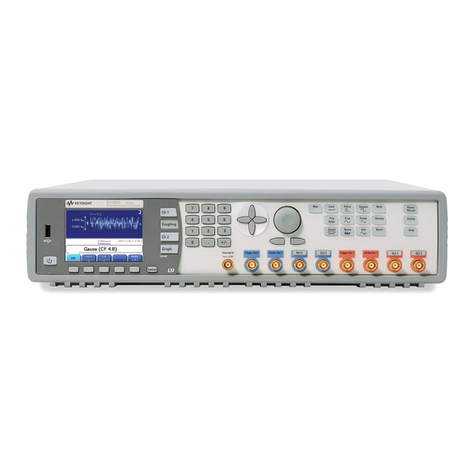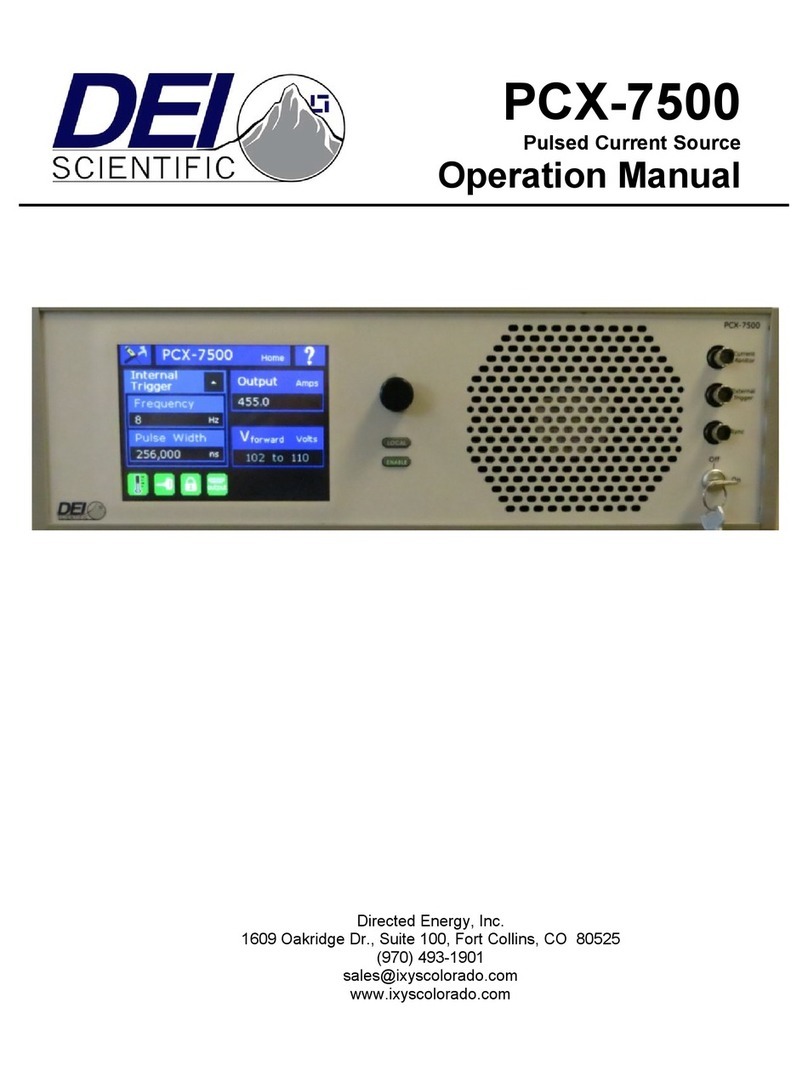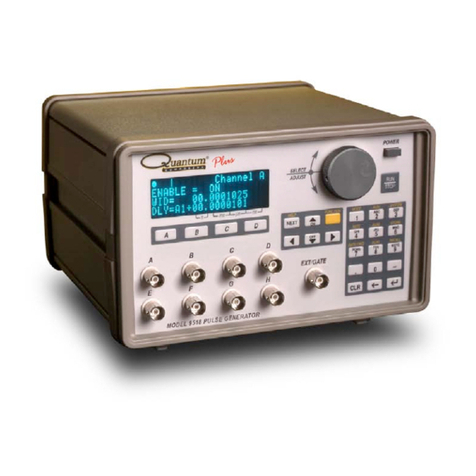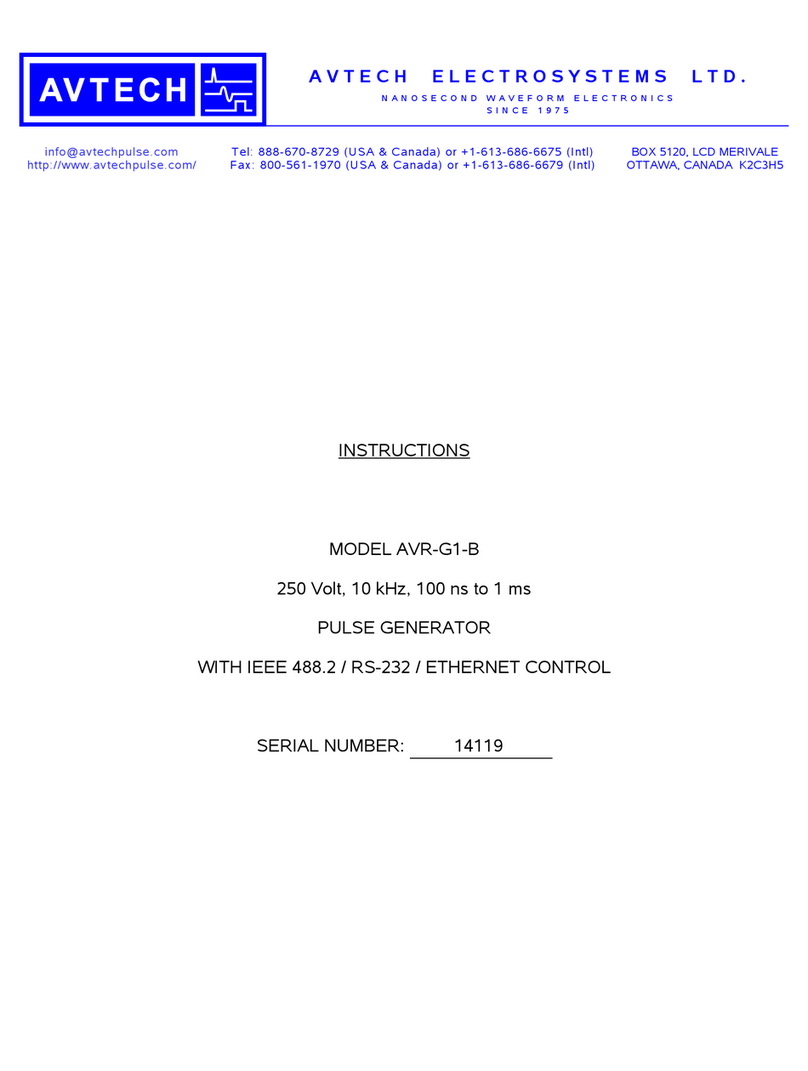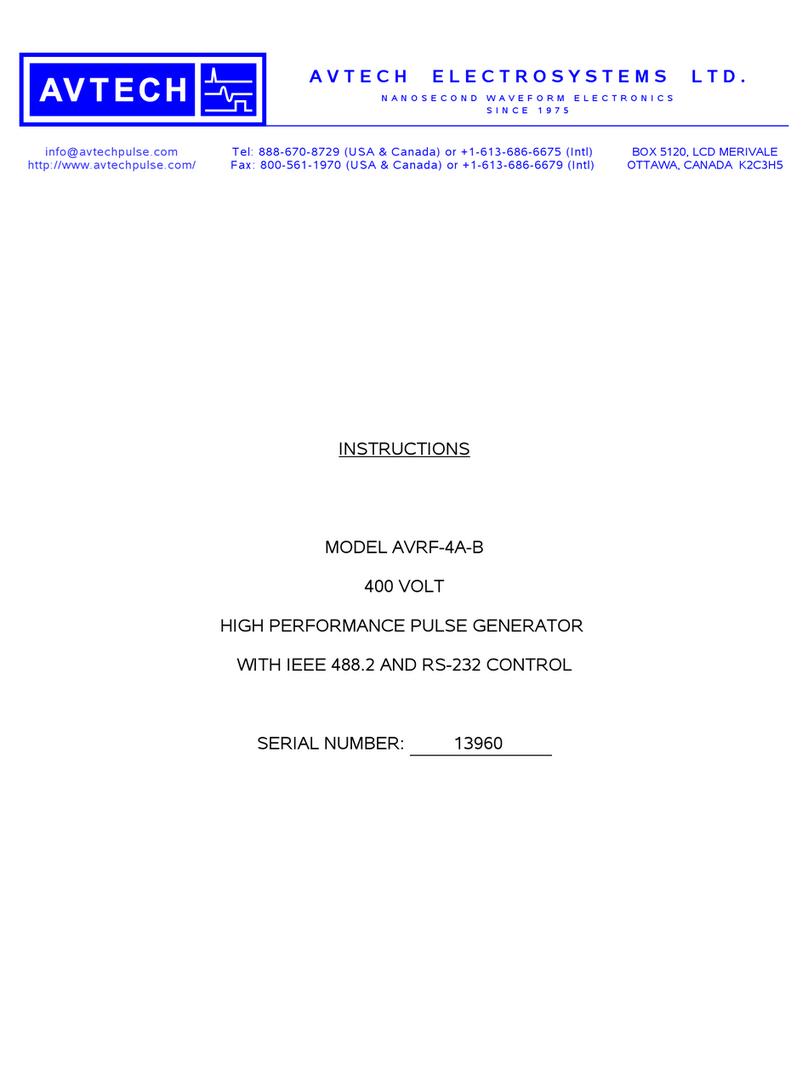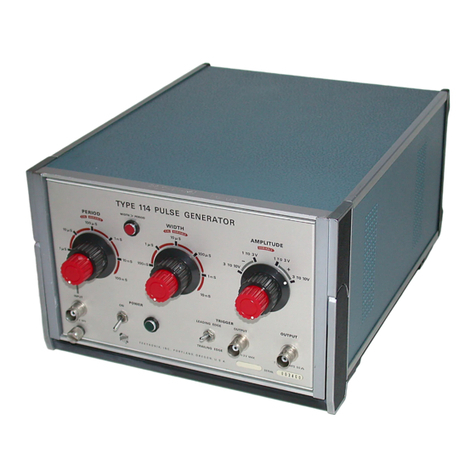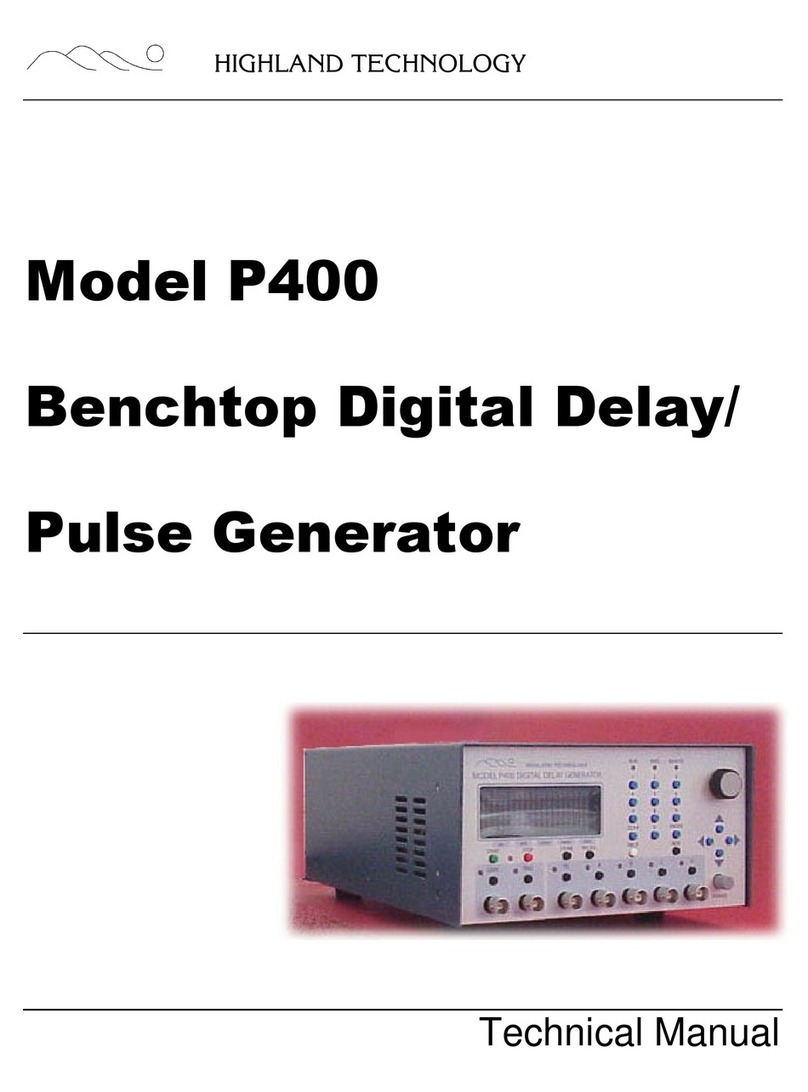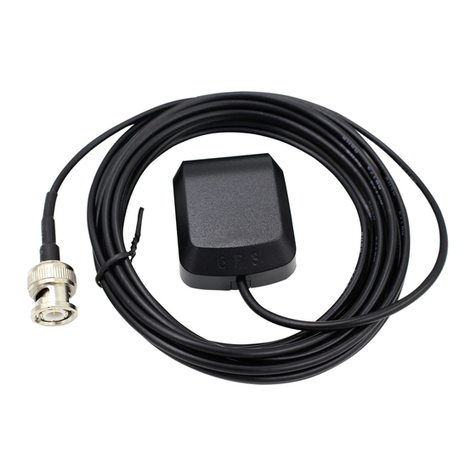SPECIFICATIONS
Model1:AV-1011B1-B
Amplitude2,6, with ZOUT = 2Ω:
with ZOUT = 50Ω:
≤10 to 100 Volts
≤2 to 50 Volts
Pulse width, PW (FWHM)3:100 ns to 1 ms
Rise time (20%- 0%)10:≤ 2 ns
Fall time ( 0%-20%)10:≤ 2 ns for ≤ 100 us PW
≤ ns for > 100 us PW
Pulse repetition frequency, PRF: 1 Hz to 100 kHz
Maximum duty cycle: 5%
Output impedance (ZOUT)5:≈ 2 Ω or 50 Ω, switchable
Required load impedance: 50 Ω
Output polarity: Positive or negative, switchable
Leading edge overshoot (into a
non-inductive 50 Ω load):
≤ % of maximum rated amplitude for all amplitudes. Typically < 3% at maximum amplitude.
Settles to ±3% of stable amplitude within 60 ns.
Typical pulse-top droop: ≈ 5% worst-case
Double pulse mode spacing: 1 us to 1 second (measured between the two leading edges of the pulse doublet). Must not exceed
one-half of the period. There must be at least (PW + 100 ns) of “dead time” (no pulsing) between the
trailing edge of the first pulse and the leading edge of the second pulse. For instance, if the pulse width
is 1 us, the programmed delay between leading edges must be greater than 1 us (the pulse width) +
1.1 us (the minimum dead time) = 2.1 us, and the period must be greater than 4.2 us.
Sync output: > +3 Volts, > 50 ns, will drive 50 Ohm loads
Gated operation: TTL, synchronous or asynchronous, active high or low, switchable.
Trigger modes: Internal trigger, external trigger (TTL-level pulse, > 10 ns, 1 kΩ input impedance), front-panel “Single
Pulse” pushbutton, or single pulse trigger via computer command. In the external trigger mode, the
pulse width may be set by the instrument, or it may be set to track the input pulse width.
Variable delay: Sync to main output: 0 to ±1.0 seconds, for all trigger modes (including external trigger).
Propagation delay: ≤ 150 ns (Ext trig in to pulse out)
Jitter: ≤ ± 35ps ± 0.015% of sync delay (sync out to pulse out)
GPIB and RS-232 control1 :Yes, standard feature on all -B units.
Ethernet port, for remote control
using VXI-11.3, ssh, telnet, &
web:
Included. Recommended as a modern alternative to GPIB / RS-232.
See http://www.avtechpulse.com/options/vxi for details.
LabView drivers: Available for download at http://www.avtechpulse.com/labview.
Settings resolution: The resolution of the timing parameters (pulse width, delay, period) varies, but is always better than
0.15% of (|set value| + 20 ns). The amplitude resolution is < 0.1% of the maximum amplitude.
Settings accuracy: Typically ± 3% (plus ±1V or ± 2 ns) after 10 minute warmup, at low duty cycles7. For high-accuracy
applications requiring traceable calibration, verify the output parameters with a calibrated oscilloscope9.
Output protection: The output is protected against short circuits, open circuits, and high duty cycle
Connectors: BNC female
Power requirements: 100 - 240 Volts, 50 - 60 Hz
Dimensions: 100 mm x 430 mm x 375 mm (3.9” x 17” x 14. ”)
Chassis material, weight: Anodized aluminum with blue-gray plastic trim. ≤ 10 kg / 22 lbs.
Temperature range: +5°C to +40°C
Optional rack-mount kit: Add the suffix “-R5” to the model number to include 19” rack mount kit
1) -B suffix indicates IEEE-4 .2 GPIB and RS-232 control of amplitude and frequency. See http://www.avtechpulse.com/ gpib for details.
2) The output amplitude may also be controlled by applying 0 to +10 V DC to a rear-panel BNC connector.
3) The output pulse width may also be controlled externally by applying a TTL-level trigger of the desired width to a rear-panel BNC connector (PWIN
= PWOUT mode).
4) For adjustable (0 to ±20V) DC offset, add -OT to the model number (e.g., AV-1010-B-OT). When generating a pulse with positive amplitude, the
offset plus amplitude must remain between 0 and +100V, and when generating a pulse with negative amplitude, the offset plus amplitude must
remain between 0 and -100V.
5) This is the internal resistance in series with the output. It is not the load resistance.
6) The output can be set at lower values, but the overshoot may become significant relative to the pulse amplitude at low amplitudes.
7) The amplitude may decrease ~10% relative to the programmed setting if the instrument is operating at or near the maximum specified duty cycle.
) Subject to the additional limitation that there must be at least 75 ns of “dead time” (no pulsing) between the trailing edge of one pulse and the
leading edge of the next pulse.

